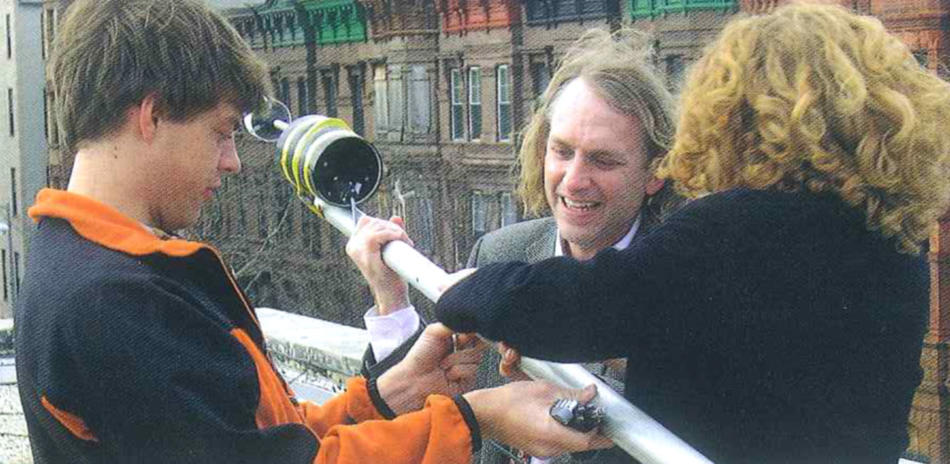A mysterious stench that wafted over parts of New York City and New Jersey on the morning of January 8, briefly hospitalizing 19 people and shutting down subways and schools, generated lots of explanatory theories. A natural gas leak was ruled out within a couple of hours, and suspicions turned to air pollution and sewage fumes. Some New York City politicians pinched their noses and blamed New Jersey chemical plants, prompting defensiveness across the Hudson. “I think New York officials should stop pointing fingers and work with the New Jersey DEP if they have a theory,” said Elaine Makatura, a spokesperson for the New Jersey Department of Environmental Protection. “We’re not too sure the smell didn’t come from New York,” added Anthony Iacono, town administrator for Secaucus, New Jersey.
Everybody seemed to agree that the overpowering odor was reminiscent of rotten eggs, and nothing like the thick smell of maple syrup that blanketed Manhattan on separate occasions in the autumns of 2003 and 2005. That olfactory mystery is still unsolved, as this one might have remained, too, if not for the investigative efforts of four Columbia environmental scientists and one from Barnard. They combined their knowledge of marine biology, air and water pollution, and weather patterns to study the incident on their own time for several days afterward. They concluded that the smell emanated from bacteria in salt marshes along the shores of Staten Island and in Jamaica Bay, nestled between the southern shores of Queens and Brooklyn. The scientists described their findings in a January 21 New York Times op-ed, and as yet, the authors say, no one has challenged them.
The New York City shoreline is rich with microorganisms feasting upon organic matter, according to the scientists, because treated sewage gets deposited there. Sulfur-based gases like hydrogen sulfide get released into the air when saltwater washes over the sediment, causing a chemical reaction. Western winds blowing down from the Poconos typically push the smell out to sea. This happens more or less continuously in warm weather, but not when freezing temperatures stop the decomposition.
But a couple things happened differently leading up to the Monday morning in question. First, a stretch of unseasonably warm temperatures thawed the ground, so “a lot of sediment was built up” and waiting to decay, says geochemist Wade McGillis, one of the authors of the Times op-ed and a Columbia associate professor. In addition, a weather phenomenon called an atmospheric inversion occurred early that morning. That means that high- and low-pressure weather systems collided and warm air settled above the cold air, trapping a pocket of cool air near the ground. To make matters worse, winds in the metropolitan area nearly disappeared for a few hours. As a result, a low-lying bubble of stink strayed inland, where it parked itself until midday, when winds picked up again and dispersed it.
The scientists figured all this out by examining data from Columbia air sensors atop buildings across Manhattan, and information from the National Weather Service and the U.S. Air Force. They also calculated how much sulfur-based gas the shoreline sediment could give off, and the numbers added up.
“Our explanation highlights the consequences of exposing water to sewage, fertilizer, chemicals, or other pollutants,” they wrote in the Times. “Of course, these consequences go beyond odor — they kill marsh vegetation, degrade the wider marine habitat, and make it unsafe to swim or fish.
“Yes, water quality in the New York area has become better in recent decades,” they continued. “But there is still much room for improvement.”
The other op-ed authors were Brian Mailloux, an assistant professor of environmental sciences at Barnard, and Greg O’Mullan, Ray Sambrotto, and Philip Orton, who like McGillis are scientists at the Lamont-Doherty Earth Observatory.



